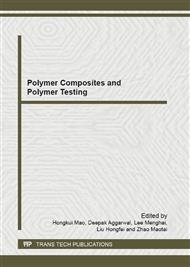p.49
p.53
p.58
p.63
p.67
p.72
p.76
p.80
p.85
Self-Piercing Riveting Process Simulation of Joining Aluminium Alloy Sheets
Abstract:
In this study, a numerical model was built to simulate the self-piercing riveting (SPR) process using commercial LS-DYNA finite element code. The difficulties in numerical simulation of the SPR process, such as large deformation and fracture, were resolved by the use of an explicit solution process combined with the r-adaptive meshing method. The model was applied to joining two sheets of 6061 aluminium alloy. The effects of die geometry, rivet material properties and the adaptive step size in numerical calculation were studied, using 6061 aluminum sheets as a model system. The simulation agrees well with the experimental results in terms of geometric characterisitcs of the cross-sections of the joints formed.
Info:
Periodical:
Pages:
67-71
Citation:
Online since:
April 2012
Authors:
Price:
Сopyright:
© 2012 Trans Tech Publications Ltd. All Rights Reserved
Share:
Citation:


